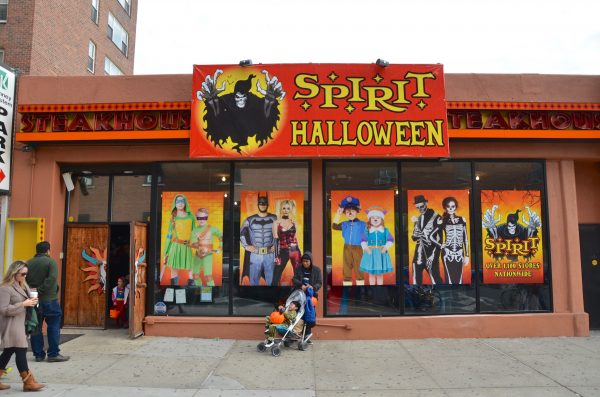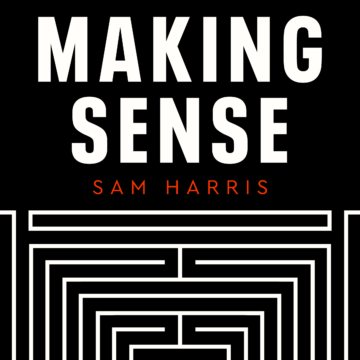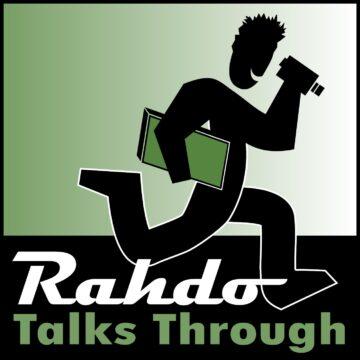Each fall, across the United States and Canada, around 1500 empty storefronts are taken up by the signature yellow, orange and black signage of Spirit Halloween. The seasonal retailer sells Halloween masks, Halloween costumes, Halloween costumes for dogs, Halloween decorations, creepy robots and several different kinds of fake blood. And they do it to the tune of around a billion dollars a year in sales, according to some estimates. While Spirit stores make landfall every August, by early November, every one of their physical locations is closed.
Despite being a pop-up store, Spirit has developed a cult following. YouTube creators love to post videos from the ‘opening day’ of their local Spirit locations, and there have been songs and even an independent horror film dedicated to the haunted shop.
The last few years have been considered a “retail apocalypse” for many businesses, with lots of brick-and-mortar chains closing their physical locations. So what does it say about the world of retail that a seasonal Halloween store is taking all of these abandoned storefronts, for three months a year, and making a killing in the process?
The Early Days of Spirit
Before he became a merchant of all-things-Halloween, Joe Marver was the owner of Spirit Discount Women’s Apparel, a clothing store in the Bay Area. In the early 80s, Marver watched as customers flocked to a dancewear store across the strip mall, which received a surge in popularity around spooky season every year.
“They were lined up around the block for the month of October, and it was insane because our October stunk,” says Marver.
In 1983, the dancewear shop closed. And Marver decided he could not let those customers go someplace else. So he put the women’s clothing in the basement, and bought a crop of Halloween costumes, for one month only, giving rise to the first iteration of Spirit Halloween. By the next year, Marver had expanded to a second location, which grossed an eye-popping $100,000. Soon, he was running six stores, and soon, he had franchises across the state, opening only on a seasonal basis.

Spirit locations were built for the short term, using materials that could be put up and taken down quickly. “I remember that the tables for displays were actually the cardboard boxes that the merchandise came in,” says Mike Olsen, a real estate broker who started working with Spirit in the 80s, and is still associated with the company. “You’d pile these boxes up in the middle of the sales floor, drape a black cloth over ’em, and that was your display table.”
The Hermit Crab of Retail
Spirit was growing quickly, but early in the development of the business, Joe, Mike and their team hit a major roadblock. Very few landlords wanted to rent their space to a business that was going to put down stakes for eight weeks and then leave the space abandoned. “I was calling around to landlords and other brokers,” says Olsen of the early days, “and they’d look at you like you had three heads.”
Olsen says he would drive around new markets and scope out abandoned big box stores, looking for any corporate landlords that might take his call. Mike remembers getting creative to win over one possible landlord with a suite of available spaces, by sending a severed arm as a gag. “I stapled it to a piece of cardboard, put my business card on it, and then right there the gentleman’s name, ‘Hey, lend me a hand. I need your location here.’” Ultimately, the ploy worked and he got the deal.

If one of these stores closed, landlords were stuck, since these spaces were purpose-built and difficult to repurpose. It wasn’t possible to put a hospital, or an apartment complex into an old big box, unless a prospective owner completely redeveloped the property and sought changes to local zoning.
While Spirit would occasionally take residence in an old bank or, one time, a defunct church, their focus has always been abandoned big box stores. According to Joe Marver, the best space for Spirit is anything over 10,000 square feet, preferably across the parking lot from another popular store. “If it had good traffic, and it was a corner that had across the street, a Lowe’s or a Home Depot, then that would be enough of a draw,” says Marver.
The Corporate Era
After 16 years in business, Joe Marver sold Spirit Halloween to Spencer’s Gifts, a mall staple most Americans will know for their fine array of lava lamps and novelty t-shirts. Since 1999, under corporate ownership, Spirit has grown from 65 locations to around 1500.
In some ways, Spirit has become a more polished operation. Until recently, the company was known for carrying ‘knock off’ costumes for popular characters, including a “Sidekick Bros” outfit that looked suspiciously like Super Mario and Luigi. Today, the company has the license to characters from Disney, Marvel and Nintendo.

But not everything about their business has been ‘corporatized.’ Spirit’s physical locations are still temporary in nature. Their yellow, black and orange logo is still plastered on a tarp in front of each storefront. Their display is still made of peg board. And they still pursue the same real estate strategy, by filling abandoned big box stores each fall.
Mike Olsen, the real estate broker, says Spirit was able to take advantage of empty storefronts left by erstwhile brands like Comp USA, Circuit City and Borders Books in the 1990s. After the financial crisis of 2008, there was even more space available. “I think the Phoenix Metro area at one time had 256 empty retail boxes, big boxes [in 2009]. Take your pick,” says Olsen.
This real estate plan has developed into a meme online. “You’ve probably seen the memes out there that whenever the government shuts down, for example, someone hangs the Spirit Halloween banner, you know, super imposes it on the White House,” says Olsen.
This has led some critics to dub Spirit Halloween “the grim reaper of retail.” Rachel Quednau, the program director at Strong Towns, wrote an essay in 2021, in which she criticized what Spirit has come to represent, saying their success is thanks in large part to the policy failures of suburban-style development.
“If our cities are thinking about what is a long-term benefit for us financially for our residents, then we shouldn’t be thinking about pursuing really short-term, massive businesses like this,” says Quednau.
“Honestly, for all the huge big box stores that are now sitting vacant, I think the best case scenario is to knock ’em down, let them return to the earth, particularly if they’re on the edge of town where it’s hard to access without a car.”
Quednau adds that, “I don’t think that there’s something inherently wrong with Spirit. It’s more like a symptom of a bigger problem.”
“If our cities are thinking about what is a long-term benefit for us financially for our residents, then we shouldn’t be thinking about pursuing really short-term, massive businesses like this,” says Quednau.
For his part, Mike Olsen believes Spirit serves a larger function in the retail economy with their temporary occupancies. “We’ve cleaned more floors, replaced more light bulbs, and fixed more HVAC units across the country than I would think any other retailer at this point,” he says.
“When we go into a space, we need that space to look good. And oftentimes a retailer, when they leave a space, they’re not leaving it in a condition that’s ready to occupy.”
While it’s tempting to call Spirit a “grim reaper” or a “zombie,” a more apt metaphor might be a hermit crab, a creature that takes up abandoned storefronts as a temporary home, because they’re so readily available.

Epilogue
This is 99PI’s 600th episode! And today is producer Chris Berube’s fifth anniversary with the show. We’re incredibly grateful to our listeners for listening and supporting us all these years, and to Chris for producing this very fun episode. Here’s to 600 more!










